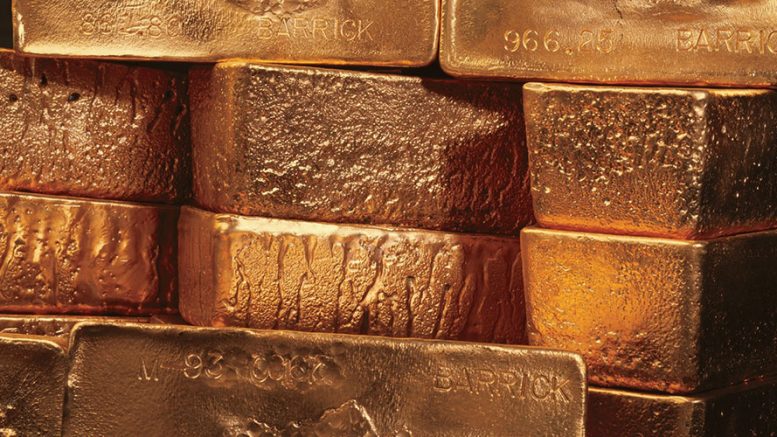With the price of gold having crested US$2,000 an ounce, the World Gold Council released its latest report on the precious metal’s demand trends. The Gold Demands Trends report covers both the second quarter and first half of 2020, and it shows that the Covid-19 pandemic hit the consumer sectors of the gold market in the first half of this year the hardest, with total demand dropping by 6% to 2,076 tonnes compared with the same period last year.
However, while overall gold demand fell, the report shows that the first half of the year saw record investment in gold-backed ETFs. Totalling 734 tonnes, the inflows were partially driven by monetary and fiscal responses to the pandemic, in the form of rate cuts and massive liquidity injections. This helped lift the price of gold in U.S. dollars, which gained 17% in the first six months of the year. The gold price also reached record highs in a number of other currencies, including the euro, sterling, rupee and renminbi.
The Council’s report says that bar and coin investment weakened sharply in the first six months of 2020, down by 17% to 396.7 tonnes, which was the lowest first-half since 2009. Meanwhile, the investment sector showed a divergence in global behaviour, with most markets across Asia and the Middle East seeing a downturn, while Western investors increased their demand.
For instance, data analysis by the Council shows that disinvestment in Thailand wiped out the previous year’s demand as investors sold 40.6 tonnes of gold to take advantage of record commodity prices in a nation whose tourism-dependent economy was ravaged by the pandemic. Strict lockdowns across much of the Middle East also weighed on bar and coin sales. Where investors were able to trade, the report says, distress selling largely offset investment fuelled by price gains.
Meanwhile, bar and coin demand in the U.S. during the first half of the year nearly tripled year-on-year to 29.3 tonnes, while European investors amassed a significant 137.4 tonnes of gold bars and coins in the same period, the highest total since 2010. The bulk of this growth came from Germany, Austria and Switzerland, as well as from investors in the United Kingdom.
By far the largest decline noted in the report was gold jewellery demand in the first six months of the year, which slumped globally by 46% year-on-year to 572 tonnes, as markets remained in lockdowns and consumers were deterred by the metal’s high price and the pandemic’s squeeze on disposable income. This was most noticeable in China, where it declined 52% year-on-year, and India, where it was down 60%.
Chinese markets for gold jewellery began to rebound in March as the country emerged from lockdown and its economy reopened. But the strict lockdown imposed in India from late-March until mid-May encompassed the important religious festival of Akshaya Tritiya, when buying gold is considered auspicious and normally heavy. With bricks and mortar stores closed across the country, the report says that Indian gold jewellery sales were “trivial” in comparison with the same period last year.
“Consumer demand took a brutal hit from Covid-19 in the first [half] of 2020,” Louise Street, from the World Gold Council’s Market Intelligence Group, stated in a press release. “The consumer-focused sectors of the market will likely remain subdued for the next six months, but ongoing uncertainty and the threat of further waves of the pandemic mean that gold’s safe haven status will appeal to investors for the foreseeable future.”

Credit: World Gold Council and James Kar Productions.
As the report highlights, it is the global investment demand for the commodity in the first half of 2020 that stands out, with investors adding record amounts of gold-backed ETFs to their portfolios. With 734 tonnes of inflow into these products by the end of June, worldwide holdings reached a new high of 3,621 tonnes, with assets under management hitting a record US$205.8 billion.
Globally, the Council found that all regions saw consistent monthly inflows to ETFs throughout the second quarter. But North American-listed funds were by far the strongest, attracting more than 75% of global inflows during the second quarter of 2020. Holdings in the region grew to 1,898.4 tonnes by the end of June, accounting for just over half of the total volume of the precious metal held in global gold-backed ETFs.
In the second quarter of 2020, European-listed gold ETFs saw inflows of 86.7 tonnes, with the U.K.’s 53 tonnes making up the majority. Asian-listed gold ETFs hit a new high of 102.2 tonnes after adding 9.2 tonnes in the second quarter. Three new Chinese gold ETF products were listed in the second quarter, which expanded the number of Chinese-listed funds to seven.
The Council’s Gold Demands Trends report explained there were three key factors driving the inflows.
The first is a growing need to hedge risk, as expectations mount that the global economic recovery will not be V-shaped, but, rather, become U-shaped or, worse, W-shaped. This, the report says, supports demand for gold as a risk-diversifying asset.
The second factor is the continued ultra-low interest rate environment. These historically low levels have the dual impact of reducing the opportunity cost of holding gold, while supporting the case for it as an inflation-hedge among investors.
The report then noted how positive price momentum is a crucial factor in the inflows. Gold generated returns of 17% in the first half of this year, even accounting for the sharp retracement during March, when many investors were forced to use gold for liquidity. But with the U.S. dollar gold price at its highest in eight years, it attracted further momentum-driven inflows on the back of these gains.
Finally, the World Gold Council’s report pointed to the supply issue, which has affected many sectors of the mining industry as compared to last year. In the first half of the year, total gold supply declined 6% to 2,192 tonnes due to disruptions related to Covid-19. For the same reasons, mine production in the first six months of the year fell 5% to 1,604 tonnes, the lowest first-half level since 2014.
The main reason for the supply issue is the lockdowns that have occurred across the world, leaving mine production in a state of limbo. As the report points out, this saw gold mine production in Mexico fall 62% year-on-year in the second quarter. South African production declined 59%, while Peru’s fell 45%.
While there were some producers registering production increases, the overall review of the last six months shows that besides curtailed output, the impact of the lockdowns has also increased all-in sustaining costs (AISCs). The most recent data available, for the first quarter of 2020, shows the quarterly average AISCs rose to US$980 per oz., 4% higher than last year.
As the World Gold Council states, “Covid-19 created the perfect storm for gold investment as historic liquidity injections and record low interest rates significantly cut the cost of carrying gold.”






Be the first to comment on "Covid-19 creates ‘perfect storm’ for gold investment: World Gold Council"